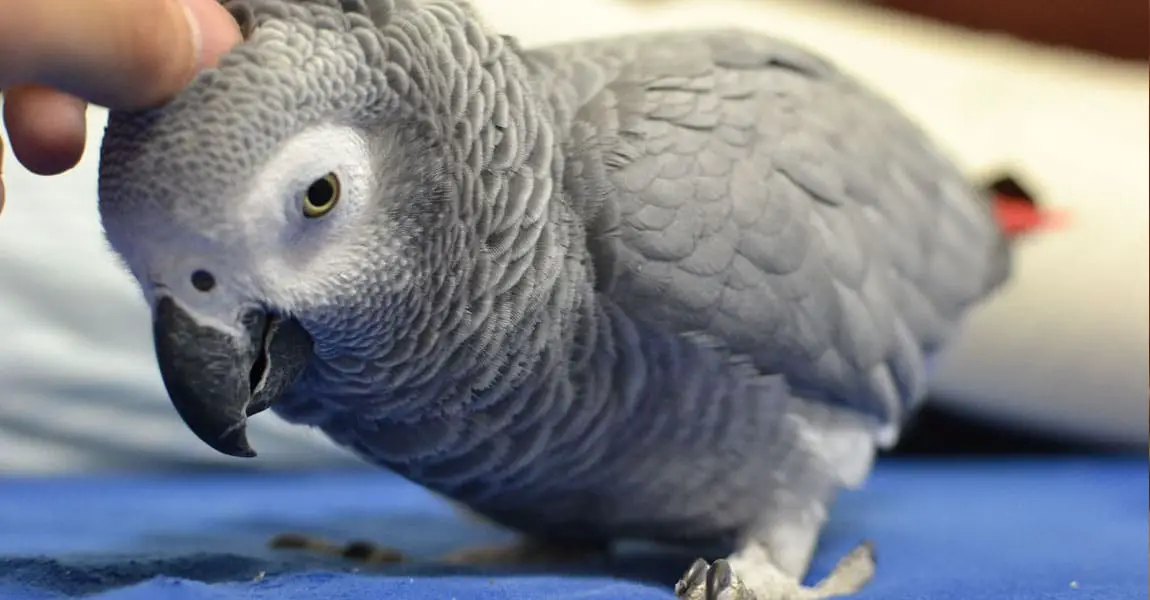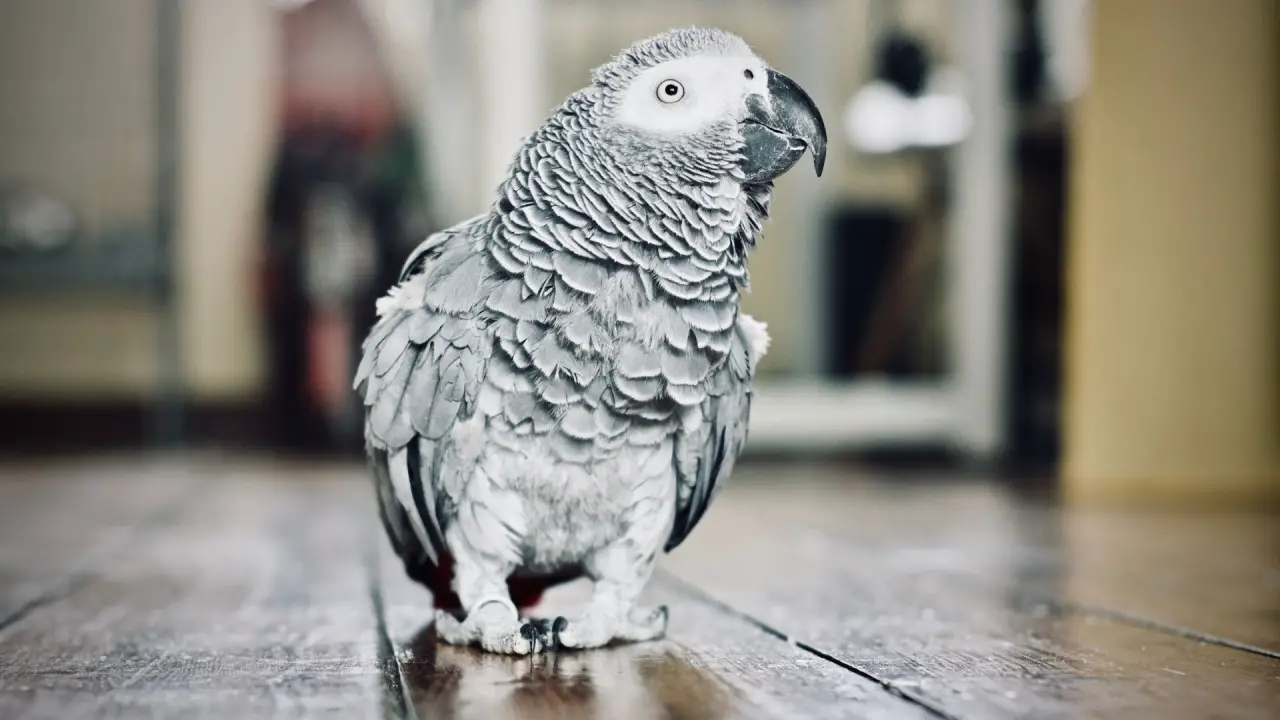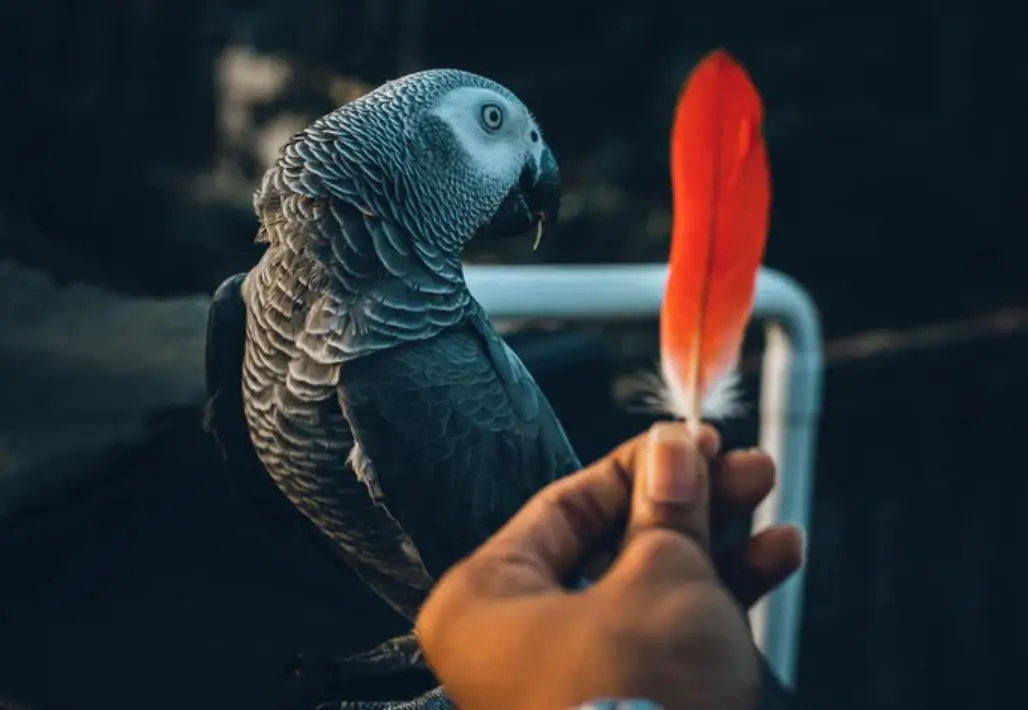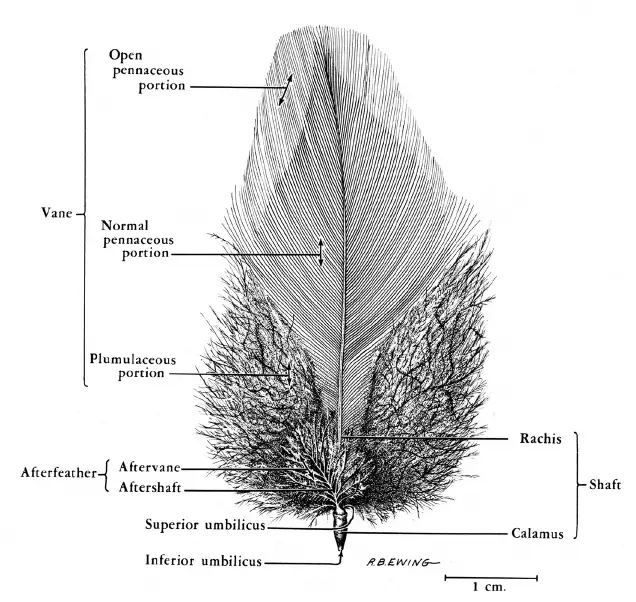Blogs, Health & Care
Caring for Your African Grey Parrot: Feather Care Tips
Caring for Your African Grey Parrot Feather Tips
Do you want your African Grey parrot’s feathers to shine with vibrant beauty? Are you looking for expert advice on how to care for your beloved bird’s mesmerizing plumage? Look no further! In this article, we will provide essential tips and guidance on how to maintain your African Grey parrot’s feathers, ensuring they stay healthy and gorgeous for years to come.
Feathers play a vital role in the well-being of African Grey parrots. Not only do they enable flight and help regulate body temperature, but they also serve as a key indicator of your bird’s overall health. Proper feather care is essential for preventing issues such as molting, feather plucking, and feather loss.
So, how can you ensure that your African Grey parrot’s feathers are in top-notch condition? What are the best practices for maintaining their feather health? Join us as we uncover the secrets to keeping your feathered friend’s plumage impeccable!
Key Takeaways:
- Proper feather care is crucial for maintaining vibrant plumage in your African Grey parrot.
- Feathers are indicators of your bird’s overall health.
- Prevent issues like molting, feather plucking, and feather loss by following expert advice.
- Learn the best practices for maintaining your African Grey parrot’s feather health.
- Unlock the secrets to keeping your bird’s plumage impeccable for years to come.
Understanding African Grey Feather Health
African Grey parrots are known for their stunning plumage, but maintaining their feather health requires understanding the various stages they go through, including molting and the risk of feather plucking or loss.
The Molting Process
Molting is a natural process in which African Grey parrots shed old feathers and grow new ones. During this time, you may notice an increase in feather dust as well as changes in your parrot’s behavior. Molting can be a stressful period for your bird, so providing a healthy diet rich in essential nutrients is crucial for supporting the growth of new feathers.
Preventing Feather Plucking
Feather plucking is a behavioral issue that can result from stress, boredom, or physical discomfort. It’s important to identify and address the underlying cause of feather plucking to prevent further damage to your African Grey’s plumage. Provide mental and physical stimulation through toys, puzzles, and interactive play. Ensure your parrot’s environment is clean, comfortable, and free from potential stressors.
Maintaining a balanced diet, providing ample opportunities for enrichment, and creating a stress-free environment are essential in preventing feather plucking in African Grey parrots.
Addressing Feather Loss
Feather loss can occur due to various reasons, such as poor nutrition, hormonal imbalances, or underlying health issues. If you notice excessive feather loss in your African Grey parrot, it is crucial to seek veterinary advice. A professional can help diagnose the cause of the feather loss and recommend appropriate treatment options to ensure your parrot’s feather health is restored.
Feather Health Tips
Here are some general tips to maintain the overall feather health of your African Grey:
- Provide a balanced and varied diet consisting of high-quality pellets, fresh fruits, vegetables, and occasional treats.
- Ensure your parrot has access to clean, fresh water at all times.
- Regularly clean and sanitize your parrot’s living environment to prevent the buildup of bacteria or fungus.
- Offer plenty of opportunities for your bird to exercise and engage in natural behaviors.
- Observe your parrot closely for any signs of distress, discomfort, or changes in feather condition.
By following these guidelines and keeping a close eye on your African Grey parrot’s feather health, you can ensure they maintain vibrant plumage and overall well-being.
| Common Causes of Feather Plucking | Prevention Tips |
|---|---|
| Stress or anxiety | Provide a calm and enriched environment |
| Boredom or lack of mental stimulation | Offer interactive toys and engage in regular playtime |
| Poor diet | Provide a balanced and nutritious diet |
| Underlying health issues | Seek veterinary advice for appropriate treatment |
Maintaining Your African Grey’s Feather Condition
Proper maintenance and understanding of your African Grey parrot’s feather anatomy are crucial for preserving their overall feather condition. By taking care of their wing feathers, tail feathers, and understanding their unique feather anatomy, you can ensure your African Grey’s plumage remains healthy and vibrant.
Wing Feather Care
The wing feathers of your African Grey parrot play a vital role in their flight and balance. Regularly trimming their wing feathers, under the guidance of a professional avian veterinarian, can prevent accidents and injuries during flight or confined spaces. Trimming should be done with caution, ensuring that the flight capabilities are not hindered, granting your parrot the freedom to glide and enjoy their natural instincts.
In addition to trimming, it’s important to provide opportunities for your African Grey to exercise and strengthen their flight muscles. Encourage them to fly short distances within a safe environment, using perches or flight-training tools designed specifically for parrots. This exercise promotes not only physical health but also mental stimulation and overall well-being.
Tail Feather Care
The tail feathers of your African Grey parrot contribute to their balance and agility. It’s essential to regularly check their tail feathers for any signs of damage, such as fraying or breakage. Gentle handling is required while inspecting the tail feathers, ensuring you don’t cause any discomfort or stress to your parrot.
If you notice any damaged tail feathers, it’s advisable to consult with an avian veterinarian for appropriate guidance and treatment. They may recommend options such as feather trimming or providing additional support to prevent further damage to the tail feathers.
African Grey Parrot Feather Anatomy
Understanding the fundamental aspects of your African Grey parrot’s feather anatomy can help you identify any abnormalities or potential health issues. African Grey wing feathers consist of the outer vane, inner vane, rachis, and barbs. The tail feathers also have a similar structure, allowing for proper flight and maneuverability.
Regularly observing your parrot’s feathers and their anatomy can help you detect early signs of feather plucking, irritations, or infections. If you notice any concerns, consulting with an avian veterinarian is paramount to ensure appropriate diagnosis and treatment.
| Feather Feature | Description |
|---|---|
| Outer Vane | The outermost part of the wing feather, providing structure and protection. |
| Inner Vane | The inner layer of the wing feather that aids in flight and insulation. |
| Rachis | The central shaft of the feather, providing support and flexibility. |
| Barbs | The thin, hair-like strands that extend from each side of the rachis, interlocking to form a flat surface. |
By understanding the unique feather anatomy of your African Grey parrot, you can better appreciate their beauty and take necessary steps to maintain their feather condition.
Conclusion
Caring for your African Grey parrot’s feathers is essential for their overall health and well-being. By following the tips and guidelines provided in this article, you can ensure that your parrot’s feathers remain in excellent condition.
Remember to closely observe your parrot’s feather health, as any signs of molting, feather plucking, or feather loss should be addressed promptly. If you have any concerns, don’t hesitate to consult with a veterinarian who specializes in avian care.
With proper care and attention, your African Grey parrot will continue to showcase its stunning plumage for years to come. Invest the time and effort necessary to provide your parrot with the care it deserves, and enjoy the beauty and companionship that these magnificent birds bring to your life.
FAQ
How often should I check my African Grey parrot’s feathers?
It is recommended to check your African Grey parrot’s feathers daily for any signs of damage, plucking, or abnormality.
What should I do if I notice feather loss in my African Grey parrot?
If you notice feather loss in your African Grey parrot, it’s important to consult with your avian veterinarian. Feather loss can be a sign of various underlying health issues that need to be addressed.
How can I promote healthy feather growth in my African Grey parrot?
To promote healthy feather growth in your African Grey parrot, ensure they have a balanced and nutritious diet, provide opportunities for exercise and mental stimulation, and create a stress-free environment.
What is molting, and how often does it occur in African Grey parrots?
Molting is the natural process of shedding old feathers and growing new ones. African Grey parrots typically go through a molt once or twice a year, and it can last several weeks to several months.
How can I prevent feather plucking in my African Grey parrot?
Feather plucking can have various causes, including stress, boredom, health issues, or environmental factors. To prevent feather plucking in your African Grey parrot, provide mental stimulation, a stimulating environment, and address any underlying health concerns with the help of a veterinarian.
What are some signs of healthy feather condition in an African Grey parrot?
Signs of healthy feather condition in an African Grey parrot include vibrant colors, smooth texture, and a full and even distribution of feathers across the body.
How can I care for my African Grey parrot’s wing feathers?
Care for your African Grey parrot’s wing feathers by ensuring they have enough space to stretch and exercise their wings, avoiding exposure to strong drafts or extreme temperatures, and providing perches of different sizes and textures to maintain proper grip and prevent malformation.
How important is the condition of my African Grey parrot’s tail feathers?
The condition of your African Grey parrot’s tail feathers is essential for maintaining balance and agility during flight. Regularly check for any signs of tail feather damage, ensure they are properly groomed, and consult with a veterinarian if you notice any abnormalities.
Can you explain the basic anatomy of an African Grey parrot feather?
An African Grey parrot feather consists of a central shaft called a rachis, which supports barbs extending from it. The barbs have barbules that interlock, giving the feather its structure and flexibility. The vanes on either side of the rachis provide the overall shape of the feather.




